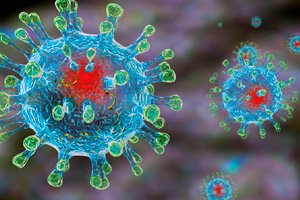
All iLive content is medically reviewed or fact checked to ensure as much factual accuracy as possible.
We have strict sourcing guidelines and only link to reputable media sites, academic research institutions and, whenever possible, medically peer reviewed studies. Note that the numbers in parentheses ([1], [2], etc.) are clickable links to these studies.
If you feel that any of our content is inaccurate, out-of-date, or otherwise questionable, please select it and press Ctrl + Enter.
Coronavirus lingers in the brain even after recovery
Last reviewed: 02.07.2025
 ">
">Once it enters the brain, the coronavirus infection remains there much longer than in other organs, including the respiratory system.
The COVID-19 pathogen damages not only the respiratory organs. Many already know that the infection also affects the digestive and cardiovascular systems. And relatively recently, protein particles of the coronavirus were discovered in the structures of the brain, although this vital organ is equipped with strong infectious protection - the blood-brain barrier.
Recently, the scientific journal Virusis published an article with information that SARS-CoV-2 does not simply enter the brain, but lingers in it for quite a long time, adding problems even after the infection has been eliminated from other organs and the patient has clinically recovered.
Scientists from the University of Georgia conducted a study on genetically modified rodents that acquired susceptibility to the new coronavirus. The rodents were injected with a solution infected with the coronavirus through the nasal cavity. For three days, a peak viral concentration was detected in the respiratory system, which then began to decrease. However, the content of the pathogen in the brain structures remained quite high even on the sixth day after infection. At the same time, a thousand times more coronavirus was detected in the brain than in other organs. It is also important that the clinical picture of COVID-19 simultaneously became more pronounced: the mice had difficulty breathing, severe weakness, and loss of spatial orientation. Neurological symptoms were a consequence of damage to the central nervous system.
Scientists suggest that many disorders that are detected during coronavirus infection are caused not so much by damage to the respiratory organs as by the penetration of the pathogen into the brain. This can also explain cases when patients were already clearly on the way to recovery, and suddenly there was a sudden deterioration in their condition: perhaps here, too, the culprit was the virus hiding in the brain structures. This probably also explains the development of a specific post-COVID syndrome.
If the coronavirus infection enters a living organism through the respiratory system, it can relatively easily reach the brain. However, it should be understood that the study was conducted on genetically modified rodents, not on humans, so it is too early to draw precise conclusions.
